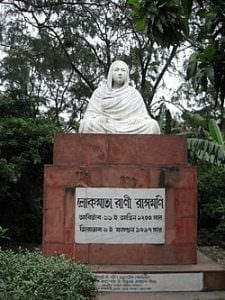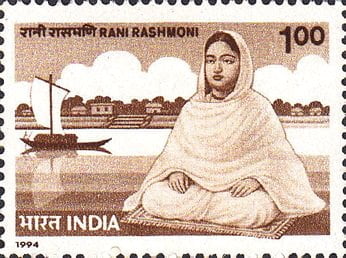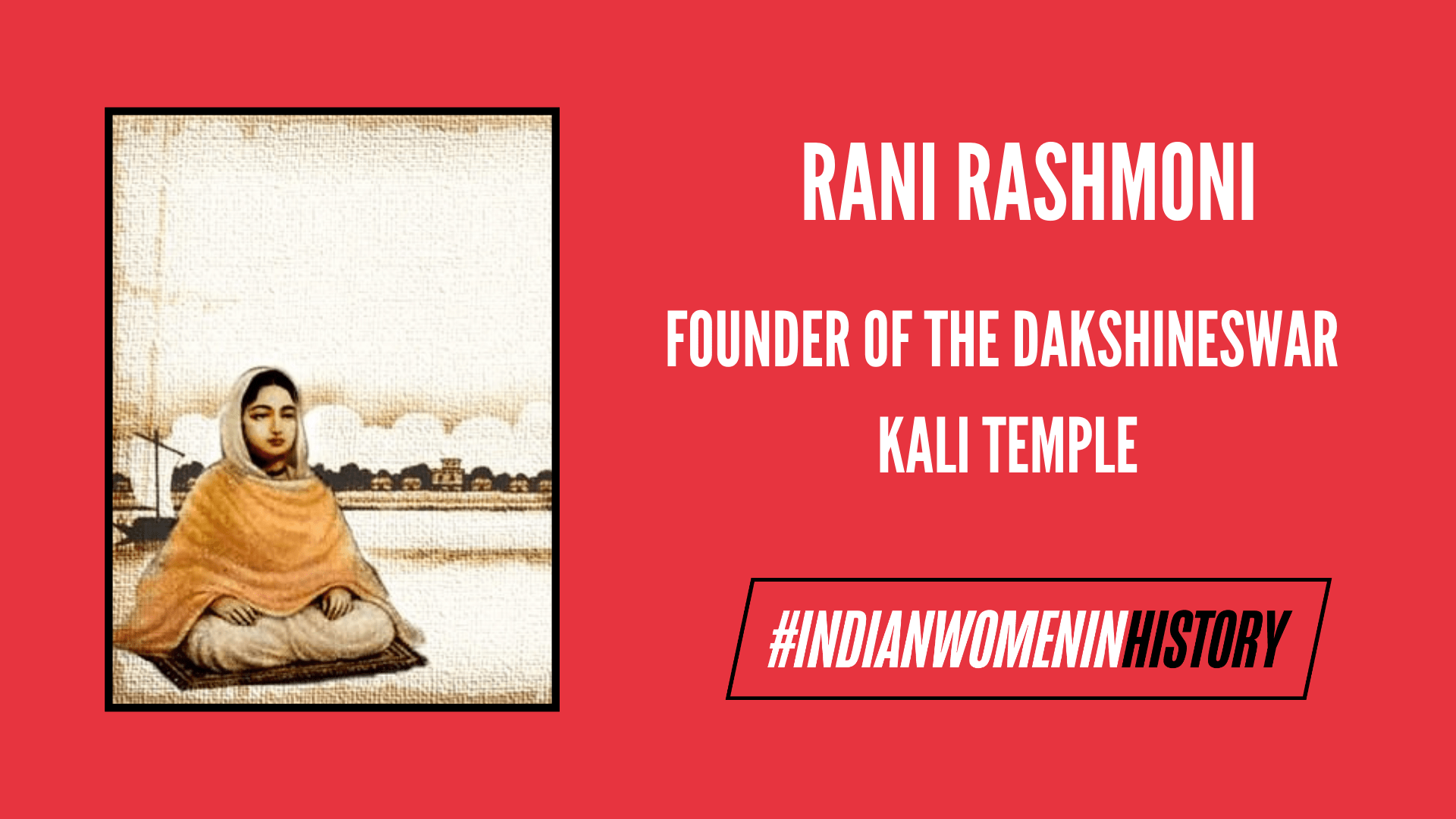It was the worst of times. The fabric of India’s Hindu society was mired by orthodoxy, religious dogmas, caste, superstitions and evil practices. The Brahmin pundits/scholars, who also doubled up as priests, were at the helm of society. The strong presence of Firangs & Mlechchas (Europeans & non-Hindus) propelled them to adopt more stringent measures to safeguard their faith.
They began governing the rest of society, encouraging illiteracy and ignorance – with an iron hand. Women in general were oppressed and suppressed by their men folk and assigned subservient roles. In such a dismal, grim scenario, there arose an undaunted, courageous woman, who devoted herself to the upliftment and welfare of the common people. She was Rani Rashmoni who is still remembered as one of the greatest philanthropists of Bengal.
A milestone

Statue of Rani Rashmoni at The Esplanade, Kolkata. Image Credit: Wikipedia
She was born on 28 September 1793 at a village in Halishahar (North 24 Parganas, W.Bengal), into a Kaivarta (shudra) family. Her father was a poor workman. Kind-hearted by nature, she endeared by her her fellow villagers.
Even before entering her teens, Rani Rashmoni became the third wife of Raj Chandra Das, scion of a Kolkata-based businessman-cum-zamindar family. Raj Chandra was educated and unconventional. Therefore, he encouraged Rani Rashmoni to follow her heart and enjoy unfettered freedom. She was indeed fortunate as during those times, women in most households were shackled by archaic customs and superstitions.
One of Chandra’s close associates was the renowned social reformer Raja Ram Mohan Roy. Following their first meeting, Roy discovered the fire within her soul. Her compassionate nature impressed him. It is believed that he blessed her saying “May you dispel the darkness from the lives of hundreds of hapless women…may you live up to your name and become the queen of the masses.” Having settled down into blissful conjugal life at her husband’s family home in Jaanbazaar (North Kolkata), she became mother to four daughters.
Slowly she involved herself in the family’s business and estates. Following his father’s demise, Raj Chandra came into a huge fortune. The duo channelized their wealth towards public service and welfare of teeming millions; several ghats for public bathing, pucca roads linking various parts of the city, drinking water reservoirs, old age homes, soup kitchens were setup/constructed by them, etc.
Carrying on her spouse’s charitable works
After Raj Chandra died, Rani Rashmoni took over the reins of the family’s business, and properties – something virtually unheard of in that era. Her pious, compassionate disposition notwithstanding, her downright pragmatism and astute business skills now came to the fore. She adroitly fended off those among her late husband’s friends and acquaintances who tried to take advantage of her widowhood.

Rani Rashmoni Stamp. Image Credit: India Post
According to an anecdote, one of Raj Chandra’s friends who had borrowed a sum of money, but had not paid up, approached Rashmoni, requesting her that he be appointed the manager of her estates. In a diplomatic move Rani Rashmoni asked him to repay the money first. Once he did so, she told him rather apologetically that her sons-in-law wanted to manage the estates, and she hadn’t the heart to refuse them. The matter came to rest without the gentleman feeling offended. The money too was retrieved.
For the rest of her life Rani Rashmoni efficiently managed her business dealings with the help of Mathura Nath Biswas, an educated, erudite gentleman who was married to her third daughter. Lifelong, Mathur babu (his nickname) remained her right-hand man, principal advisor, confidante and son all rolled into one.
Champion of women’s rights
Inspired by the lofty ideals of Raja Ram Mohan Roy, Rashmoni raised her voice against prevalent social malaises – polygamy, child marriage and the diabolical Sati – young widows being forcibly immolated on the funeral pyres of their husbands. She tacitly supported social activist/scholar Ishwar Chandra Vidyasagar’s campaign for widow remarriage. She even submitted a draft bill against polygamy to the East India Company, who handled the administration during those days.
Dakshineshwar Temple

The Dakshineswar Temple near Kolkata. Image Credit: Temple Advisor
By far, Rashmoni’s most outstanding achievement was the construction of the famous Dakshineswar temple near Kolkata. She purchased 20 acres of land for building the shrine dedicated to Bhavataarini (Shakti). It was completed eight years later. Since she was a non-dominant caste woman, the Brahmins refused to become priests at her temple. Finally bequeathed the temple to a Brahmin along with a large sum for its annual maintenance. Ramkumar Chattopadhyay, a Brahmin from Hooghly, became the chief priest. After his death, his younger sibling Gadadhar Chattopadhyay succeeded him.
Life changed forever
Rashmoni was mesmerized by Gadadhar’s straightforwardness, simplicity and other worldliness. On his part, Gadadhar treated her with respect and affection. He considered her as one among Ashtasakhis (8 spiritual companions) of Radha & Krishna. Under Gadadhar’s guidance, she devoted herself wholeheartedly to spiritual issues.
Rani Rashmoni passed away in February 1861 aged 68. An epitome of kindness and generosity, coupled with a liberal outlook, her life has been etched forever in the history of Bengal.
Also read: Rani Gaidinliu: The Forgotten Daughter of The Hills | #IndianWomenInHistory
About the author(s)
Delhi based Ruchira Ghosh is a trained journalist with nearly two & a half decade’s writing experience and exposure to print, web and television.





Hi Ruchira
It was a wonderful blog .. Every picture you have posted in your blog that Tells a story.
Looking forward to read your other wonderful experience. I just create an article about the same topic, Its for “Kolkata Dakshineswar Kali mandir and Belur math Adyapith with Skywalk”. Please check and share your views.
Thanks
Ruma